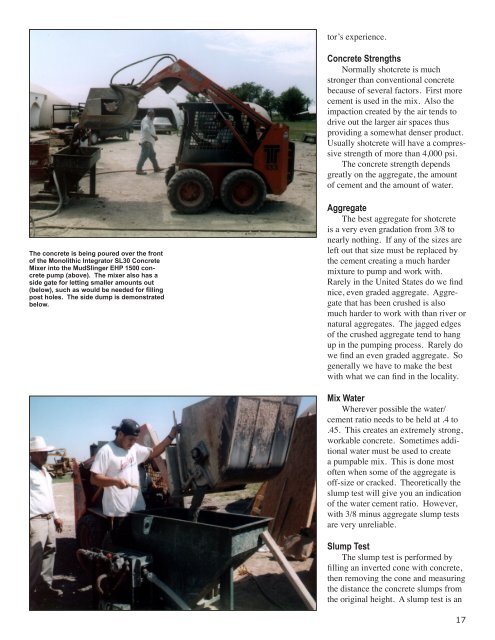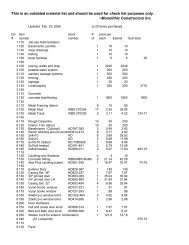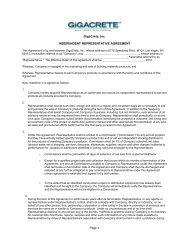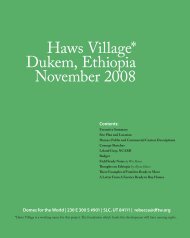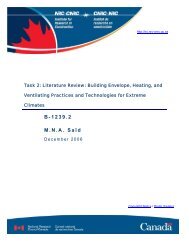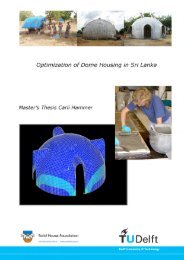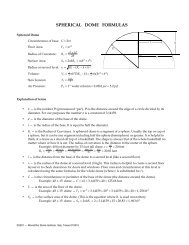How To Build A Spray-In-Place Concrete Fence - Monolithic
How To Build A Spray-In-Place Concrete Fence - Monolithic
How To Build A Spray-In-Place Concrete Fence - Monolithic
Create successful ePaper yourself
Turn your PDF publications into a flip-book with our unique Google optimized e-Paper software.
tor’s experience.<br />
<strong>Concrete</strong> Strengths<br />
Normally shotcrete is much<br />
stronger than conventional concrete<br />
because of several factors. First more<br />
cement is used in the mix. Also the<br />
impaction created by the air tends to<br />
drive out the larger air spaces thus<br />
providing a somewhat denser product.<br />
Usually shotcrete will have a compressive<br />
strength of more than 4,000 psi.<br />
The concrete strength depends<br />
greatly on the aggregate, the amount<br />
of cement and the amount of water.<br />
The concrete is being poured over the front<br />
of the <strong>Monolithic</strong> <strong>In</strong>tegrator SL30 <strong>Concrete</strong><br />
Mixer into the MudSlinger EHP 1500 concrete<br />
pump (above). The mixer also has a<br />
side gate for letting smaller amounts out<br />
(below), such as would be needed for filling<br />
post holes. The side dump is demonstrated<br />
below.<br />
Aggregate<br />
The best aggregate for shotcrete<br />
is a very even gradation from 3/8 to<br />
nearly nothing. If any of the sizes are<br />
left out that size must be replaced by<br />
the cement creating a much harder<br />
mixture to pump and work with.<br />
Rarely in the United States do we find<br />
nice, even graded aggregate. Aggregate<br />
that has been crushed is also<br />
much harder to work with than river or<br />
natural aggregates. The jagged edges<br />
of the crushed aggregate tend to hang<br />
up in the pumping process. Rarely do<br />
we find an even graded aggregate. So<br />
generally we have to make the best<br />
with what we can find in the locality.<br />
Mix Water<br />
Wherever possible the water/<br />
cement ratio needs to be held at .4 to<br />
.45. This creates an extremely strong,<br />
workable concrete. Sometimes additional<br />
water must be used to create<br />
a pumpable mix. This is done most<br />
often when some of the aggregate is<br />
off-size or cracked. Theoretically the<br />
slump test will give you an indication<br />
of the water cement ratio. <strong>How</strong>ever,<br />
with 3/8 minus aggregate slump tests<br />
are very unreliable.<br />
Slump Test<br />
The slump test is performed by<br />
filling an inverted cone with concrete,<br />
then removing the cone and measuring<br />
the distance the concrete slumps from<br />
the original height. A slump test is an<br />
17


